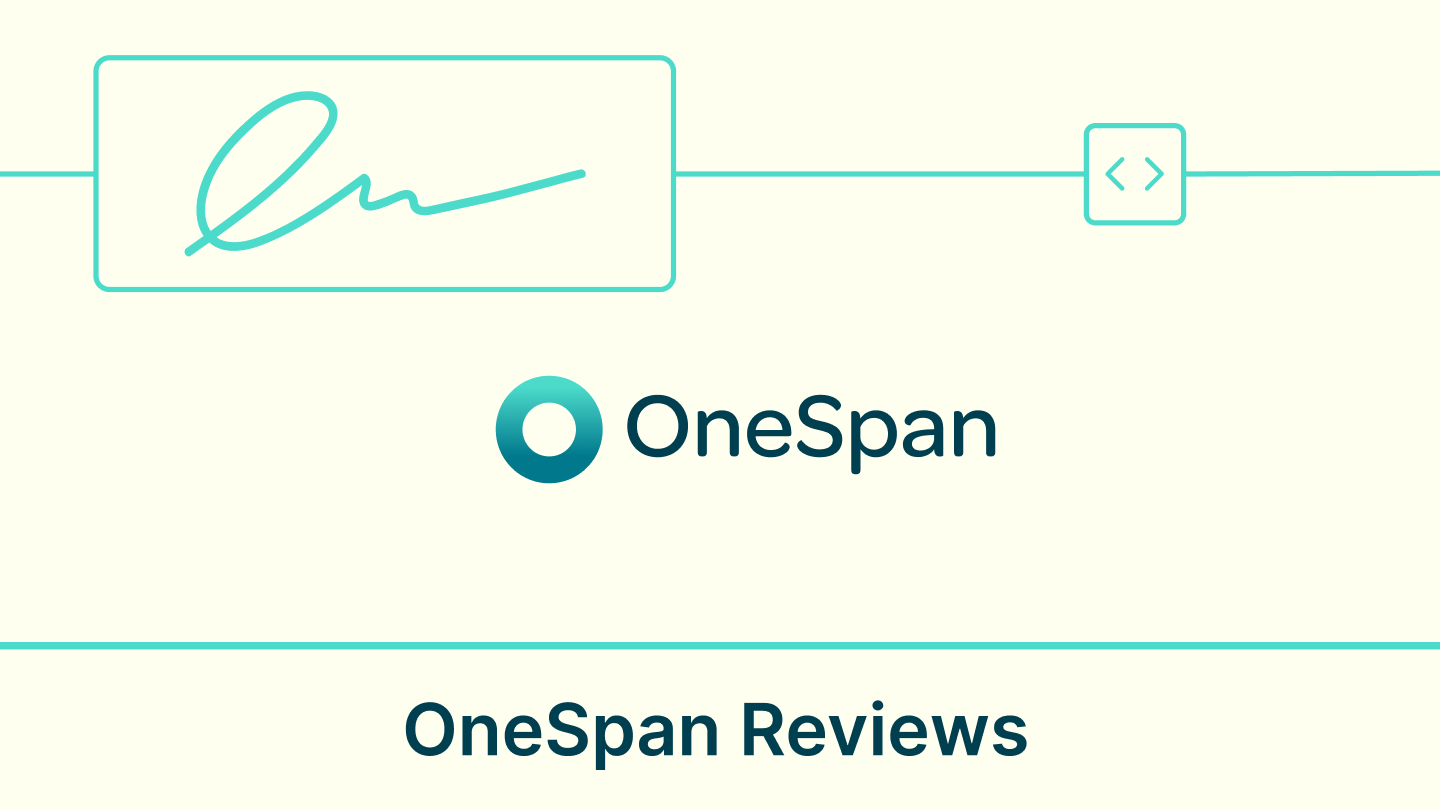A Digital Center of Excellence (DCoE) is a team or organization within a company that is focused on driving digital transformation and innovation initiatives. One of the key aspects of a DCoE is to identify and implement new technologies that can streamline business processes, improve productivity, and enhance customer experiences. One such technology that has gained significant traction in recent years is electronic signatures.
Electronic signatures are digital representations of a person’s signature that can be used to sign documents online. They are legally binding in most countries and are a secure and efficient way to sign contracts, agreements, and other important documents.
Electronic signatures have made it easier to streamline business operations, improve compliance, and drive innovation in the digital landscape businesses operate in. Being a part of a Digital Center of Excellence (DCoE), electronic signatures are crucial in driving digital transformation and innovation initiatives that enable businesses to stay competitive in the ever-changing digital world.
Benefits of using electronic signatures in creating a digital center of excellence
Electronic signatures provide a convenient, secure, and efficient way to sign and share documents. This technology has the potential to streamline processes, reduce costs, and enhance security, making it an excellent tool for organizations looking to establish a technology-driven transformation.
Some of the key benefits include:
1. Increased efficiency
Electronic signatures can significantly speed up the signing process, reducing the time and resources required to complete tasks by eliminating the need for physical copies of documents to be signed, mailed, or faxed. This increased efficiency can boost productivity and streamline operations within the organization.
2. Improved security
Electronic signatures use advanced security measures to ensure that signatures are authentic and tamper-proof, reducing the risk of fraud and errors associated with traditional signatures. This enhanced security can protect the organization and its stakeholders from potential risks and threats.
3. Enhanced customer experience
Electronic signatures provide a more convenient and streamlined signing process for customers, which improves the overall customer experience and increases satisfaction levels.
4. Reduced costs
Organizations can save on printing, mailing, and storage costs by eliminating the need for paper-based signatures, resulting in significant cost savings over time.
5. Increased compliance
Electronic signatures can help organizations comply with legal and regulatory requirements, reducing the risk of legal issues and ensuring that the organization operates within the bounds of the law.
6. Improved collaboration
Electronic signatures facilitate collaboration and improve workflow processes by allowing teams to sign and share documents digitally, regardless of physical location. This can enhance productivity and enable more agile working methods within the organization.
Building a digital center of excellence with eSignatures
Electronic signatures are a key component of digital transformation, enabling organizations to accelerate the pace of business, reduce errors, and improve customer experience. According to a study by Forrester Research, electronic signatures can reduce signature time by 80% and save up to $20 per document. Additionally, the study found that eSignatures can reduce errors and improve compliance by up to 90%.
To take advantage of the benefits of eSignatures, businesses need to be intentional about their approach by building a strategy, ensuring proper implementation, and scaling their use of eSignatures.
Developing a comprehensive eSignature strategy
An effective strategy can help a digital center of excellence streamline processes, cut down on costs, and bolster security measures. By implementing a well-crafted eSignature plan, organizations can improve their operational efficiency, reduce their environmental impact, and enhance customer satisfaction levels while staying ahead of the curve in an increasingly digital business landscape.
Here’s how to go about it.
1. Identify business needs and objectives
This involves determining which business processes can benefit from eSignatures and what the organization hopes to achieve by adopting this technology. For example, contracts, purchase orders, invoices, and HR documents are just a few business processes that can benefit from eSignatures.
2. Assess current technology and infrastructure
This includes evaluating the existing document management system, security protocols, and other relevant technologies. This assessment will help identify potential integration issues and ensure the new eSignature solution is compatible with existing systems.
3. Research and evaluate eSignature solutions
This involves the DCoE team researching and evaluating several eSignature solutions that meet the organization’s needs and infrastructure. The comparison could be on the cost of each solution, ease of use for employees, security measures such as two-factor authentication or encryption, and scalability to determine which solution best fits the organization’s needs.
4. Develop and implement a plan
This includes defining the project’s scope, creating a timeline, and identifying the necessary resources and stakeholders. Developing training materials and support is also important to ensure employees can effectively use the new eSignature software.
Implementing eSignatures in your contract workflow
Electronic Signature saves time and money, improves efficiency, and enhances customer experience. By following these steps, businesses can implement eSignatures effectively and maximize their benefits.
1. Integrate with existing systems
Integration ensures the new eSignature solution is compatible with existing systems, avoiding potential integration issues. For instance, integrating an eSignature solution with a company’s CRM system can streamline sales processes and reduce the sales cycle time. Similarly, integrating an eSignature solution with an HR system can help electronically sign employment contracts and other HR-related documents on time and avoid delays.
2. Create a clear and concise workflow
To maximize the benefits of eSignatures, creating a clear and concise workflow for your team and customers is essential. This should include clear instructions on using the eSignature solution, tracking progress, and communicating with customers.
Suppose a sales team wants to streamline its process by implementing electronic signatures. The workflow for this process would begin when the sales representative sends a contract to the client. The client receives the contract via email or a link and is prompted to sign using an eSignature solution. Once the client has signed the contract, the eSignature solution automatically sends a copy to both the sales representative and the client for their records. The sales team can then track the status of the contract and follow up with the client as needed. This workflow saves the sales team and the client time and resources, allowing for a more efficient sales process.
Managing and monitoring eSignatures
With the increased reliance on eSignatures, managing and monitoring them effectively is crucial to ensure compliance with regulations and prevent fraud. Monitoring eSignatures can provide valuable data and insights into the signing process, helping businesses identify bottlenecks and improvement areas.
1. Compliance and regulations
A digital center of excellence must ensure that eSignatures comply with legal and regulatory requirements, such as ESIGN and eIDAS. It is essential to have a comprehensive understanding of the regulations that apply to using eSignatures and to implement a robust audit trail and record-keeping system to track their usage.
2. Security and authentication
The security and authentication of eSignatures are critical to maintaining their effectiveness and trustworthiness. It is important to implement strong authentication measures, such as two-factor authentication and encryption, to protect from unauthorized access or modification of documents.
3. User training and support
To ensure that eSignatures are used effectively in a digital center of excellence, it is important to provide training and support to employees. This includes providing clear guidelines and procedures for using eSignatures and training on the specific technology being used. Ongoing support is also essential to address any issues or questions that arise.
Scalability and future planning
Businesses must be agile and adaptable to keep up with the latest technologies and market trends. Implementing eSignature solutions can help companies save time and money while increasing security and compliance. However, to truly achieve digital excellence, businesses must ensure their eSignature solutions are scalable and future-proof. By doing so, companies can ensure that their digital center of excellence remains effective and competitive over time.
1. Integration with other systems and platforms
As your business scales, it’s crucial to integrate your eSignature solution with other systems and platforms. For instance, you start with your sales team sending contracts to customers from their CRM system. Later, you want your HR teams to use it too. Integrating your eSignature solution with HR tools will simplify the process and make it more efficient. This will enable your teams to work seamlessly across various departments and platforms, ensuring a smooth workflow.
2. Adapting to changing technologies
Technology is constantly evolving, and staying up-to-date with the latest developments is essential to ensure your eSignature strategy remains effective. Your Digital Center of Excellence should have the plan to evaluate and adopt new technologies to enhance your eSignature process. For instance, integrating artificial intelligence (AI) can automate document sorting and routing, freeing up your team’s time and reducing errors.
3. Continual improvement and review
To ensure that your eSignature strategy remains effective, reviewing and improving it continually is essential. This can involve gathering customer and employee feedback, analyzing eSignature usage data, and identifying improvement areas. By constantly improving and optimizing your eSignature strategy, you can ensure it remains scalable and effective in the long term.
Creating a future-proofed eSignature strategy
As businesses navigate digital transformation, eSignatures have become essential for streamlining workflows and increasing productivity. Implementing eSignatures can provide significant benefits, such as reducing paper waste, saving time, and allowing businesses to sign a PDF online, improving customer experiences.
However, the success of implementing eSignatures is about more than just selecting the right tool. It also requires a strategic approach and ongoing evaluation to ensure the eSignature solution is integrated and optimized effectively. This is where a Digital Center of Excellence comes in.
By working with a Digital Center of Excellence and implementing the right eSignature solution, businesses can streamline workflows, increase efficiency, and enhance customer and employee experiences.
So why wait? Take the first step towards digital transformation and start your 14-day free trial with Signeasy today!











